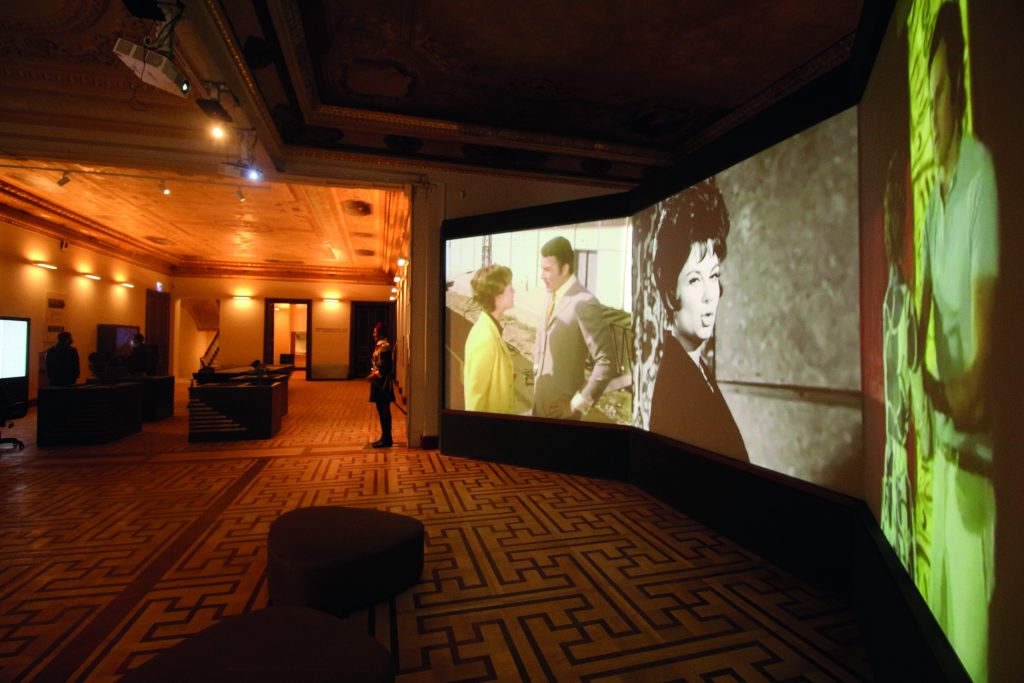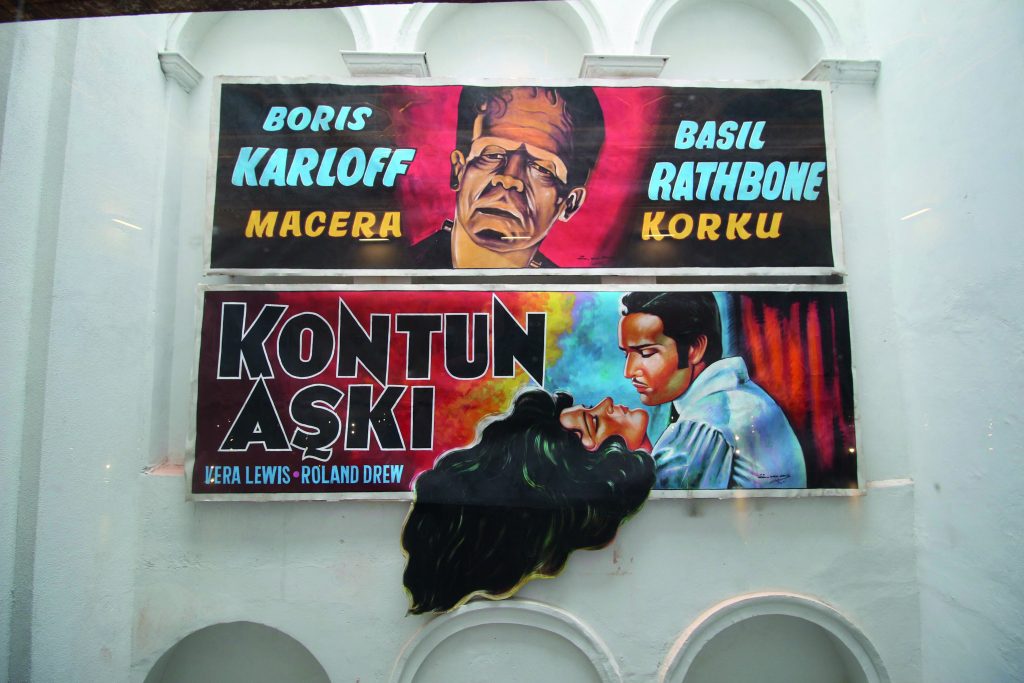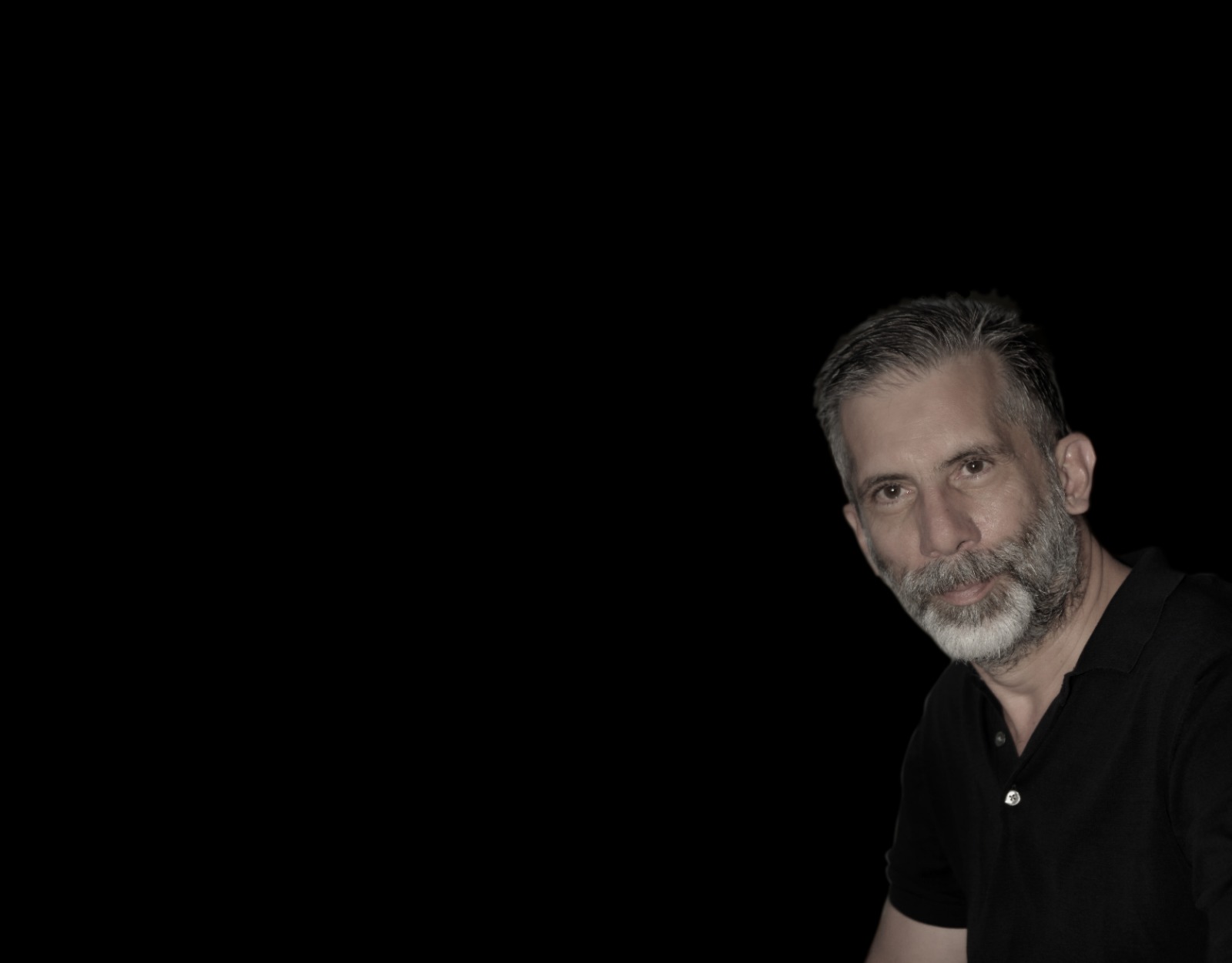The covered passages of Istanbul are an integral part of the city’s unique charm. Like the famous arcades of Paris, the passages of Istanbul were built in the European district of Pera now Beyoğlu, often opening to the main street, the Grande Rue de Péra (now İstiklal Avenue). Now, the Atlas Passage will become a museum.
The Istanbul Museum of Cinema consists of four floors and a roof area, reaching a total of 1500 square meters. The exhibition space for the museum’s permanent collection will contain an Augmented Reality Room, A Memory Pool of Turkish Cinema, a Greenbox, and a Selfie Room.
The museum will revive the Atlas Cinema, which plays a vital role in the collective memory of the city. The movie theater sits next to Yeşilçam Street, the heart of Turkish cinema for decades.
On the second floor of the museum, visitors will be shown through the different chronological periods of Turkish cinema, with themes such as Shadow and Moving Image, the Early Period, and the Current Period.
The exhibitions area on the 3rd floor rests on 400 square meters, which will act as an art gallery focused on movie culture.
“The museum will revive the Atlas Cinema, which plays a vital role in the collective memory of the city. The movie theater sits next to Yeşilçam Street, the heart of Turkish cinema for decades.”
A shared workspace called the Cinema Research Center Co-FILM will claim the top floor, providing access to an international digital database. Social areas include a cafe, museum shop and particularly the Atlas Cinema.
The Café rests on an area of 150 square meters on the museum terrace, which will serve food and drink outside of the museum’s visiting hours.

Digital Artworks
A digital piece of art in honor of Turkish cinema will be produced by Kutluğ Ataman. Emre Lüle’s window installations and infographics will form the visual language of the museum. Hyper-realistic sculptures will be placed at the staircase and museum entrance, designed to add fun to the visitors’ experiences.
Themed presentations displayed on LED screens will be placed on the outer windows of the museum building. The screens will not only provide information about the museum, but will also act as a platform where graphic artwork and new media can be displayed.
Augmented Reality Application
An augmented reality application is being designed to offer visitors the opportunity to watch real-time 4K movies. It may be among the first museum uses of the virtual platform, developed by Samsung.
The augmented reality application will also be used in cinema venues in the Beyoğlu district. Visitors will be able to download an Istanbul Museum of Cinema application and map.

History
The building was constructed during the reign of Sultan Abdülaziz, after the Beyoğlu fire on June 5, 1870. It was commissioned by Agop Köçeyan, a businessperson of the period, in the area formerly called Cadde-i Kebir (Grand Rue de Péra). The building was donated by Köçeyan to the Taksim Vosgeperan Armenian Church, and then passed into the ownership of the brothers Aziz and Ahmet Borovalı in the 1940s. “Atlas Cinema,” one of the largest multipurpose halls of the period, was built in 1948. In 1951, the first floor of the historical building was transformed into a theater (Küçük Sahne). It opened its curtains on April 13, 1951 with the play Of Mice and Men under the direction of Muhsin Ertuğrul. The building was then purchased by Cevher Özden in the 1970s and sat empty for a while. In 1985, it was handed over to the Treasury and allocated to the Ministry of Culture and Tourism in 1992.
“An augmented reality application is being designed to offer visitors the opportunity to watch real-time 4K movies.”
The historical Atlas Building was restored to its original structure, and the Atlas Cinema was completely renovated with a detailed restoration carried out by the Ministry of Culture and Tourism in 2019 and 2020.
The building, which is one of the first important examples of the reconstruction process of Beyoğlu following the fire of 1870, has a facade layout with Neoclassical features that are unique to the end of the 19th century. It reflects the art of the period with its unique ceiling decorations, plaster reliefs, marble replaces, parquet flooring and architectural elements. The rich decorations, monumental entrance, magnificent stairs and high ceilings of the building reveal the care given to its construction.
“The building, which is one of the first important examples of the reconstruction process of Beyoğlu following the fire of 1870, has a facade layout with Neoclassical features that are unique to the end of the 19th century.”
The brick-covered passage floor, which was discovered at the entrance of the building during the restoration and is on display through a panel of glass flooring, was the road that was used to enter the building’s barns by carriage.
Despite the fact that the first floor of the building lost a significant part of its original decorations and spatial elements due to the interventions that has been made over time, the unique ceiling decorations were uncovered during the restoration, hidden behind a layer of inauthentic modern additions.
Four Elements
The French painter Hippolyte Dominique Berteaux, who came to Istanbul in the 1870s, created important works reflecting the art of his period. Undoubtedly, the most striking one of these paintings can be seen on the ceiling of the Istanbul Museum of Cinema’s great hall. The work is called “Water, Air, Earth and Fire.”.
The mural is an extraordinary representation of the four elements, through the depiction of mythological characters in the classical era. In another work, there are childlike, angelic figures called putto, especially seen in Renaissance and Baroque paintings. On the 3rd and 4th floors of the building, artists used examples of geometrical and vegetative decoration frequently encountered in Islamic Art.

Putto Figures
These figures, called putto, which were uncovered during the restoration, are seen on the first floor of the building. During the classical period, putto were used to portray mythological characters and the depiction of angels during the Renaissance period. The Istanbul Museum of Cinema building is one of the rare buildings where putto figures were used in Istanbul.







